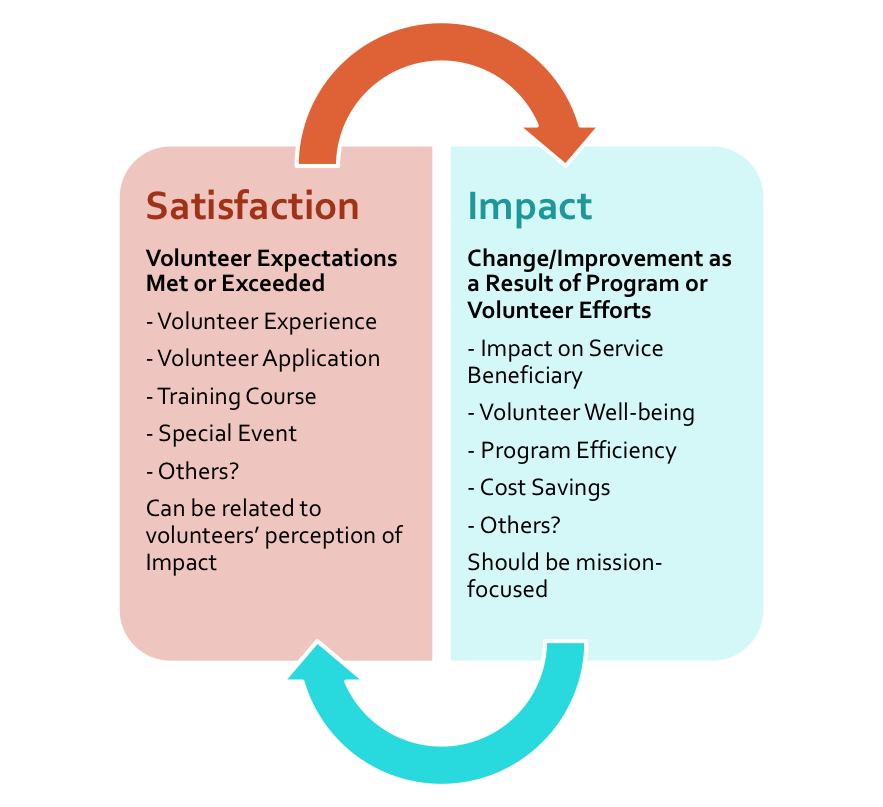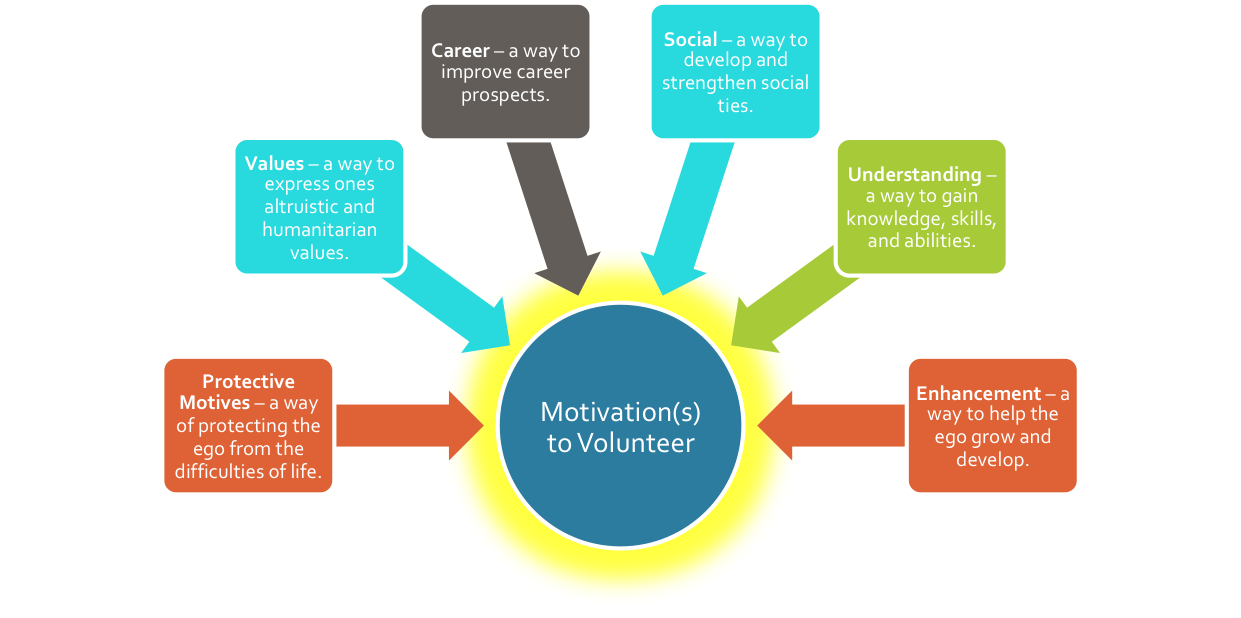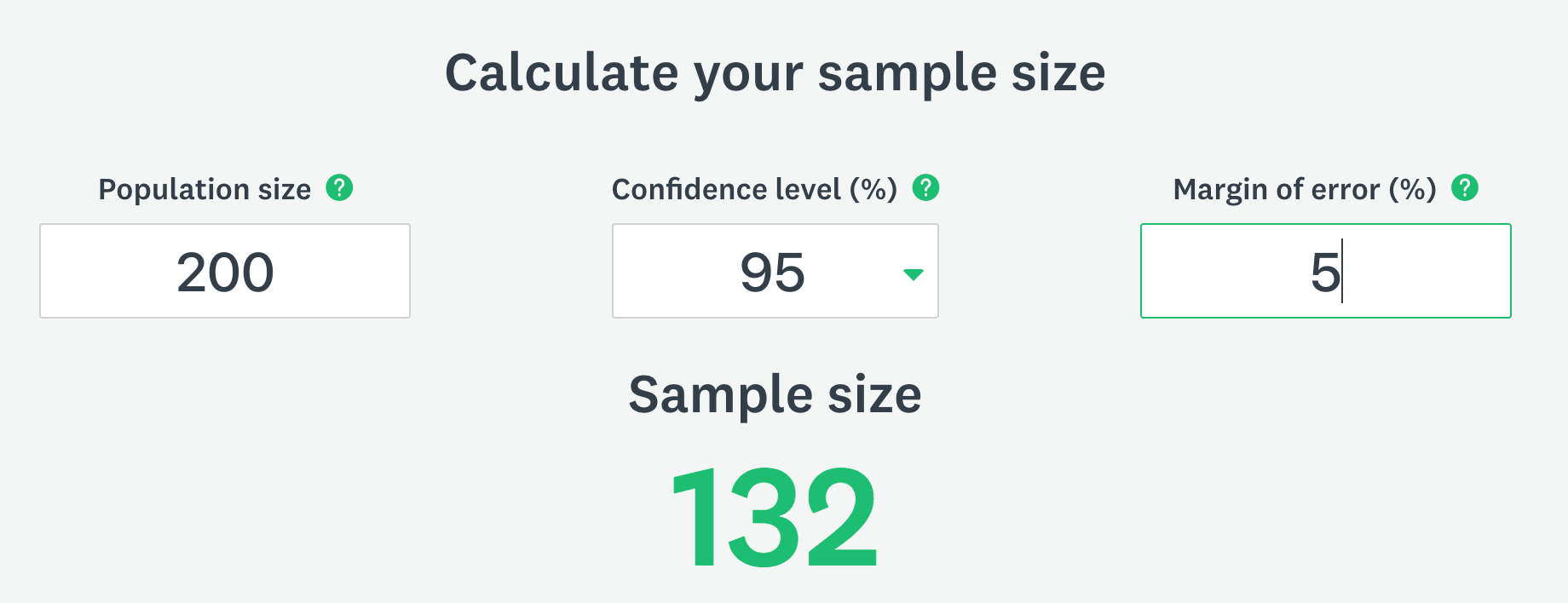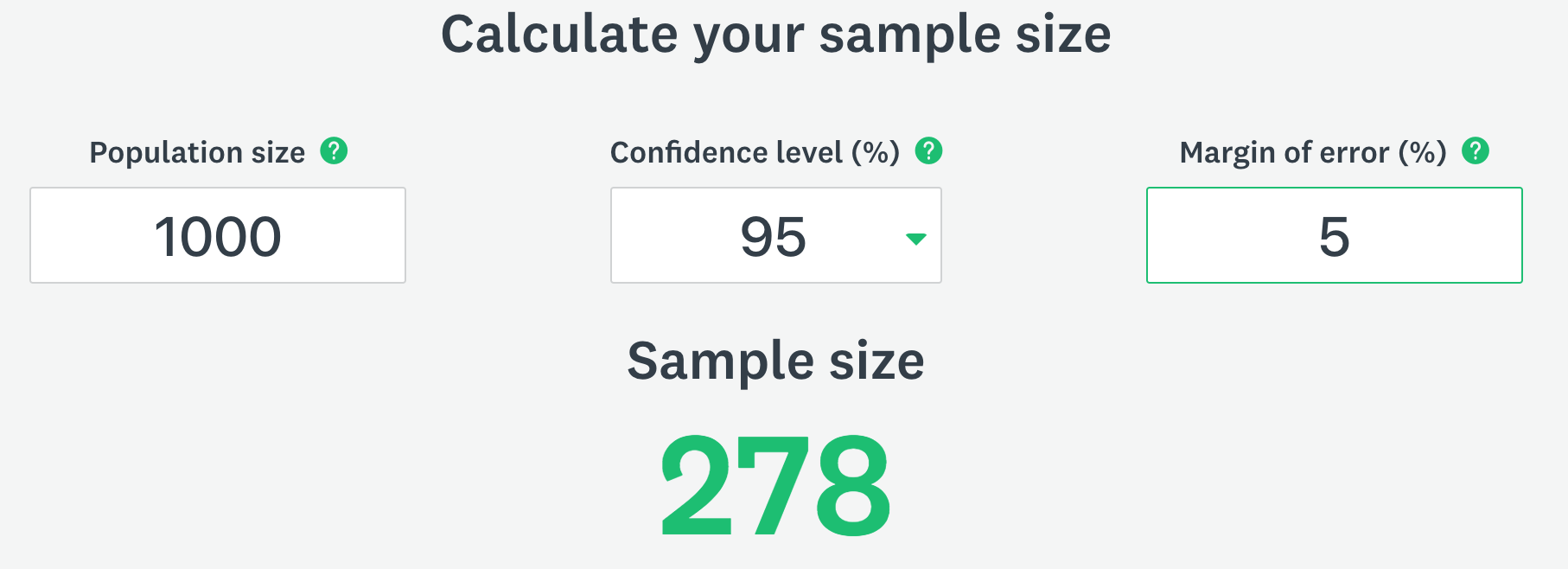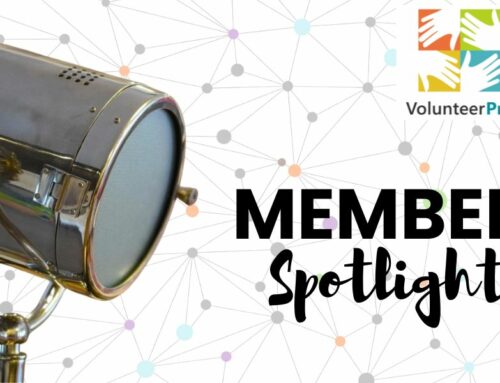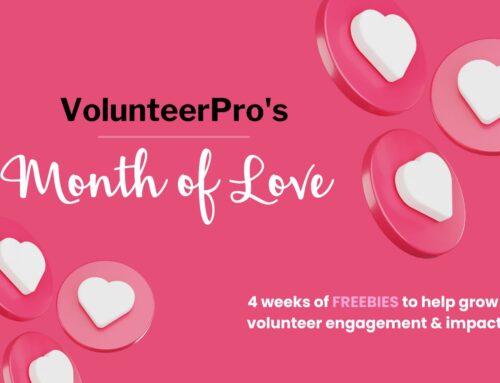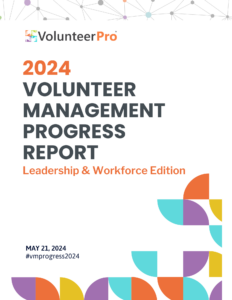
How to Write Volunteer Surveys for Big Impact
If you’re like most nonprofits, you probably send out annual volunteer surveys to gauge satisfaction.
You may get a small number of responses, not every volunteer participates, and you wonder what you’re missing. You may be able to report volunteer satisfaction levels to leadership — maybe even a few ideas for program improvements. But, you’re far from able to produce hard data about how volunteers impact your bottom line — your organization’s mission. You may not even know where to start.
Let’s change that right now.
With a few simple strategies, you can transform how you capture feedback, both from volunteers and those impacted by their work. Let’s face it, you don’t have a lot of time on your hands. So, you need to make sure that every management decision brings in big value.
But, you can’t make solid decisions without accurate information. That’s where surveys come in — they inform your decisions for the future and help you track past decisions’ impact. Yes, they can be that powerful.
But, they need to be designed in the right way. Here’s how, step-by-step …
(Click here for 6 free tools to help you measure volunteer impact)
6 Steps to Better Volunteer Surveys That Generate Actionable Info
STEP ONE: Focus on Solving Your Most Important Business Challenges
Volunteer surveys are about much more than satisfaction rankings. They can also help you solve problems by generating concrete, actionable information. Depending on what kinds of questions you ask, you can uncover integral data on satisfaction, impact, or both.
Consider some of the following uses of surveys to improve the volunteer experience and illustrate the value of their work.
Using Surveys to Measure Volunteer Satisfaction
- Measure Overall Volunteer Satisfaction
Consider benchmarking these over time and include a Net Promoter Score question.
- Measure Certain Aspects of the Volunteer Journey
Examples: application process, interview, first shift, etc. Consider tracking areas you either know or suspect are trouble spots.
- Implement Training Evaluations
Consider sending pre and post training evaluations to track the change in confidence levels for your key learning objectives.
- Measure how Volunteers Perceive Their Impact
Do volunteers feel like their work makes a difference? If they don’t feel a sense of efficacy or purpose, overall satisfaction may drop.
Using Surveys to Measure Volunteer Impact
- Measure how Volunteering Impacts the Volunteer
Research shows volunteering has positive health effects; so, if your mission is improving the health of others, this may be a helpful metric to track with surveys.
- Measure how Volunteers Impact Employees
Consider surveying both volunteers and employees to get a sense of the current climate; track over time to see if specific initiatives have increased buy-in, inclusion, trust, etc. Also gather suggestions for needed improvements from both sides.
- Measure how Volunteers Impact Service Beneficiaries
Consider surveying those who benefit from your volunteers’ work to better understand that benefit. Go beyond simply finding out whether they were happy with their service, and try to better understand the specific transformations brought about by volunteers.
These are only a few ways to use volunteer surveys to better understand your past impacts, current state of affairs, and future endeavors.
If you don’t know where you’re going chances are you won’t get there. So, when you start your next survey project, clarify what you want to learn in precise terms.
To focus, it helps to complete this sentence — “The purpose of this survey is to learn [insert key things you want to learn] from [insert your key audience – current volunteers? past volunteers? volunteers from a specific program?].”
You may have more than one goal, but make sure you know what they are before you start writing your questions.
STEP TWO: Ask the Right Survey Questions
In general, there are three basic types of questions included in satisfaction surveys. They all contribute to a deeper understanding, so try to include a mix of all three types in your survey questionnaire.
- Attribute Questions: Great for testing hunches, pinpointing problems, and correlation analysis (to see how responses from two questions relate).
- Attitude Questions: Great for benchmarking and regression analysis (to identify attributes related to overall satisfaction).
- Demographic Questions: Great for census and cross-tabbing (to compare how attributes perform with each variable).
Want to ask smarter demographic survey questions? Drop in your email for our free tip sheet.
It’s also helpful to align your questions with known drivers of volunteer behavior. For example, the Volunteer Functions Inventory is a well-researched and validated theory of volunteer motivation that covers six key areas…
Volunteer Motivations
- Protective Motives – a way to protect the ego from the difficulties of life
- Values – a way to express ones altruistic and humanitarian values
- Career – a way to improve career prospects
- Social – a way to develop and strengthen social ties
- Understanding –a way to gain knowledge, skills, and abilities
- Enhancement – a way to help the ego grow and develop
Researchers posit that volunteers engage in volunteer work in order to satisfy important personal goals. These differ from volunteer to volunteer, but when these goals are met, successful recruitment, satisfaction, and retention are more likely.
The more you know about the motivation that drives your volunteer team(s), the better you can write effective recruitment messaging, provide meaningful support, and realize better retention results.
So, ask volunteer survey questions that help you determine which motivations are most prevalent in your team. The easiest way is by making statements and asking volunteers to rate their relevance.
Example:
STEP THREE: Don’t Let Unconscious Bias Mess With Your Results
Bias — or making mental shortcuts — is an inherent human trait that is simply impossible to do away with entirely. But, you do want to take steps to reduce its effects on your survey data.
Your ultimate goal is for every person who takes the survey to understand the questions in the same way. Do this through reducing instrumentation bias.
Here are a few things you can do to increase accuracy …
Check for consistency
Cross check the results of similar questions (e.g., compare general satisfaction with intent to continue volunteering).
Avoid “Double Barreled” Questions
Break up compound or complex sentences that are really asking two things (e.g., competent & courteous).
Keep It Clear and Recent
Clearly state the criteria for the evaluation you are asking respondents to make (e.g., against what standards or benchmarks) and keep it timely (don’t ask people to pretend to remember more than 3-6 months back in time).
Avoid Jargon
Don’t assume all volunteers know your organization’s insider-speak. If people don’t understand, they will either lie or skip the question — both are bad for you. So, use unambiguous word choices and spell out any acronyms.
Eliminate Any Leading or Loaded Questions
Loaded questions usually include some form of hyperbole or strong emotion that sways the respondents answer. Leading questions will often include examples of answers. Both of these question types will skew your data big time.
Shuffle Response Options for Each Respondent
When presented with multiple choice options, people are more likely to choose the first options offered. Work against this bias by setting your software to randomly shuffle your options.
Give Some Options
Show respect to your respondents by offering them some say in what information they share. Include “prefer not to answer” for sensitive demographic questions, “N/A” where there may not have enough info to reasonably answer, and “Other” in multiple choice if you believe you haven’t covered everything.
By taking these proactive steps you can rest assured you’ll reduce bias and get more accurate results.
STEP FOUR: Collect Enough Responses to Make It Worthwhile
People often assume they need a large percentage of responses to have reliable data, but that’s only partly true.
The calculation is pretty complicated:
Necessary Sample Size = (Z-score)² * StdDev*(1-StdDev) / (margin of error)².
The good news is plenty of survey size calculators will do the math for you.
What you’ll find is the larger your total populations to be surveyed, the lower the total percentage of responses you’ll need.
Consider these two calculations run on Survey Monkey’s sample size calculator.
For a volunteer corps of 200 people, you would need over half to complete the survey for it to be reliable. But, for a group of 1,000 volunteers, you only need 278, roughly a quarter of all volunteers.
In fact, at a population of about 2,000, the total number of responses you would need tops out in the mid 300’s.
The industry standard for audience perception is 95% accuracy with a +/- 5% margin of error. If you gather enough responses to meet this threshold, no matter what sub-group of people you ask in your total population, you are likely to have 90-100% agreement. That’s pretty reliable.
Does this mean you shouldn’t worry about encouraging every volunteer to participate? If you’re just looking at data accuracy, yes.
But, surveys are also powerful engagement tools for your volunteer base. So, you’ll do better if you inspire as many people as possible take them. And, don’t forget to share the results and what you plan to do with them with volunteers. It will go a long way toward building bridges and good will.
STEP FIVE: Encourage People to Participate
If you’ve had poor response rates in the past, you’ll have to do something different to break through and gain momentum. There are a few specific things you can do to build buzz for the survey and encourage participation.
Start With a Volunteer Team
Engage a team of volunteer leaders to help you write and test the survey questionnaire. You’ll build buy-in from the ground up. If volunteers see they have a stake in the outcomes, they will be more likely to participate and help their peers.
Send Early Alerts and Share Your Work
You can build buzz by announcing you’ll be conducting a survey and sharing what you hope to learn. Another great anticipation builder is crowdsourcing some of your questions. Ask volunteers to help you build a list of multiple choice options about their experience or the tools they prefer. You can ask via email or set up a mini poll. People will be eager to see which options were ultimately included.
Explain WIIFM
Everyone wants to know “What’s in it for me?” (WIIFM), so be sure to clearly state how their responses will improve their experience, volunteer-staff relations, and/or the experiences of those they serve. Refer back to step one and share the goals of your survey.
Share the FAQs
Create a simple list of frequently asked questions and or include them in the survey email invitations. Don’t assume people know how to use the software, when the survey closes, or who to go to if they have questions. Making your process completely clear lets volunteers know you are taking this process seriously and you’d like them to as well.
Send It Out From an Influential Email
Most survey software allows you to send the survey from a specified email address. To make sure the survey invite gets opened, use the email of someone the volunteers respect. It could be your Executive Director, your Board Chair, or you.
Use Social Proof and Testimonials
You can also power up your email with 2-3 short quotes from the volunteer team who helped you develop the survey. Ask them to write down a sentence about what excites them most about the survey or why they think it’s important to your mission.
Send Multiple Progress Emails
Don’t be afraid to send more than one reminder email. In fact, plan to send at least three. If your survey software allows you to send reminders only to those who haven’t taken the survey to date, then send five. In today’s world, it takes more than one email to break through. That’s just the reality.
But, Don’t Nag
Keep your survey reminders upbeat and bright. Focus on what your organization stands to gain by knowing their opinions. You can even update volunteers on how many people have responded so far and what you are learning. Celebrate volunteers, and encourage them not to miss out on the opportunity
Setting yourself up to receive broad participation and robust survey responses takes work. But, it’s worth it. You’ll have a data set you can be confident about. And, you’ll also be deepening your relationships with volunteers by getting their input and acting upon it.
STEP SIX: Share Your Results in a Compelling Way
As you gather your survey results, think about how you will share them with different audiences. You may decide not to share all things with all people, but you should plan to share information that different groups might find relevant in ways they will understand.
Consider each of the following audiences.
- Executive Leadership
- Your Board of Directors
- Volunteers (current and future)
- Service Beneficiaries
- Donors & Funders
- The Public
What do they need to know about your survey results? What will they be most interested in? If their approval is needed, how can they best hear what you have to say and support your recommendations going forward? If they provide support (cash or in-kind), what about your progress or impact will interest them most?
Also, don’t forget to include the “voice of the volunteer” in your survey report. Use excerpts from volunteer comments to give your report life and vigor and illustrate examples of the data. Balance positive and negative comments. And, keep them anonymous.
Graphics options abound and below are only a few. Choose one and keep it consistent throughout.
If you follow the six steps above, you’ll no doubt produce volunteer surveys with better response rates better data, and better results.
Remember, the main reason to invest time and energy into conducting a survey is to gather information for more informed program adjustments and management decisions.
In other words, the goal is to bring about change — big and small — backed by hard data.
You can do it. Your volunteers are counting on you to lead the way.
A Final Note: Worried About What You Might Learn?
You may worry that once you send out your survey, you’ll hear bad news. Maybe volunteers are really upset about something. Maybe your results will show that a new initiative you’ve invested so much time on isn’t getting traction.
All the more reason you need to gather feedback on a regular basis!
How can you fix what you don’t know is broken? And, why would you waste time on initiatives that don’t bear fruit?
Maybe your survey will bring good news and maybe not. Either way, it will give valuable and vital information to make clear and focused management decisions.
So, take heart and pat yourself on the back. Not everyone has the courage and determination needed to take their volunteer program to the next level. You, however, are well on your way to deeper wisdom.
And, you’ll reap the rewards of better volunteer management and impact because of it.

